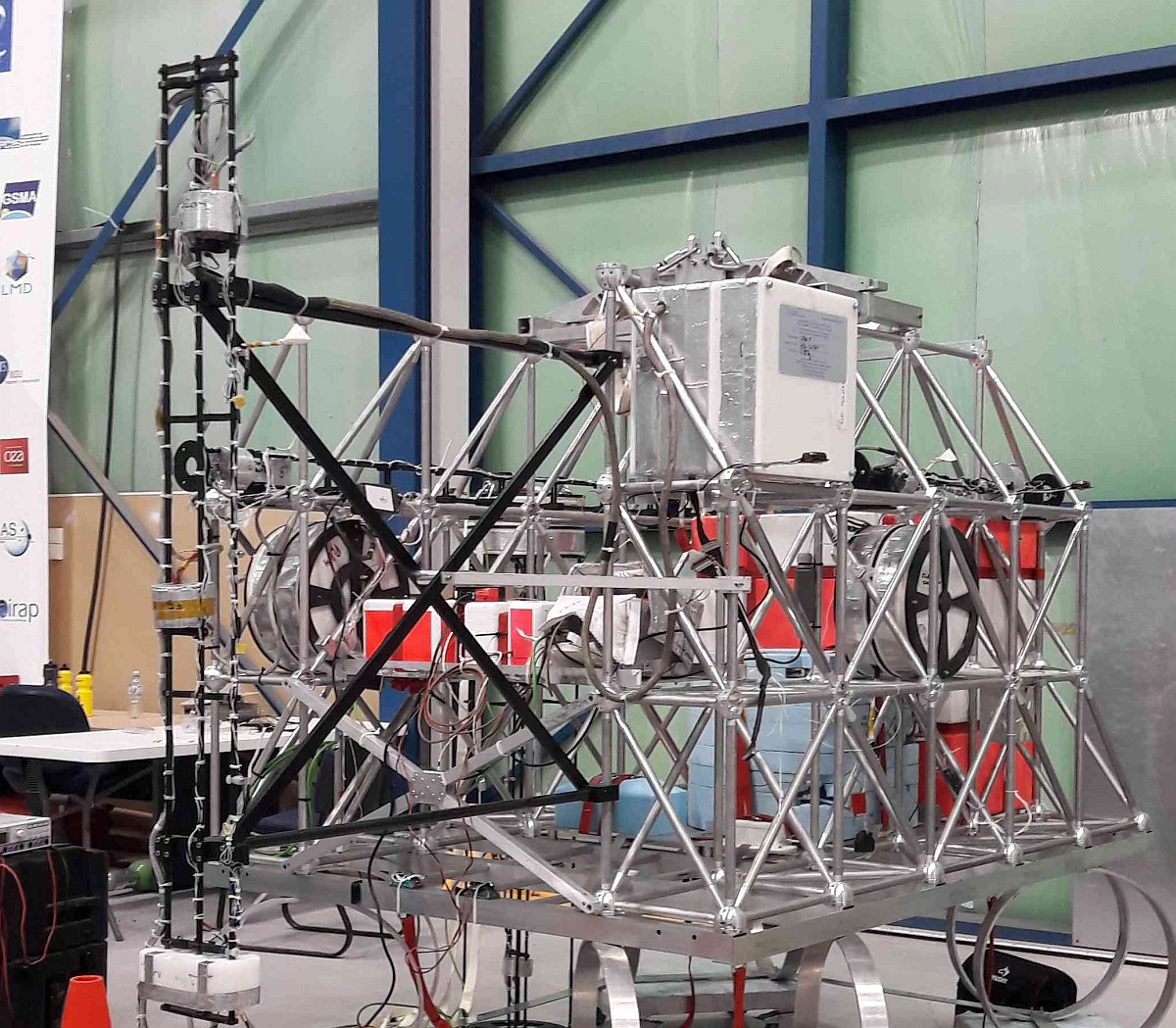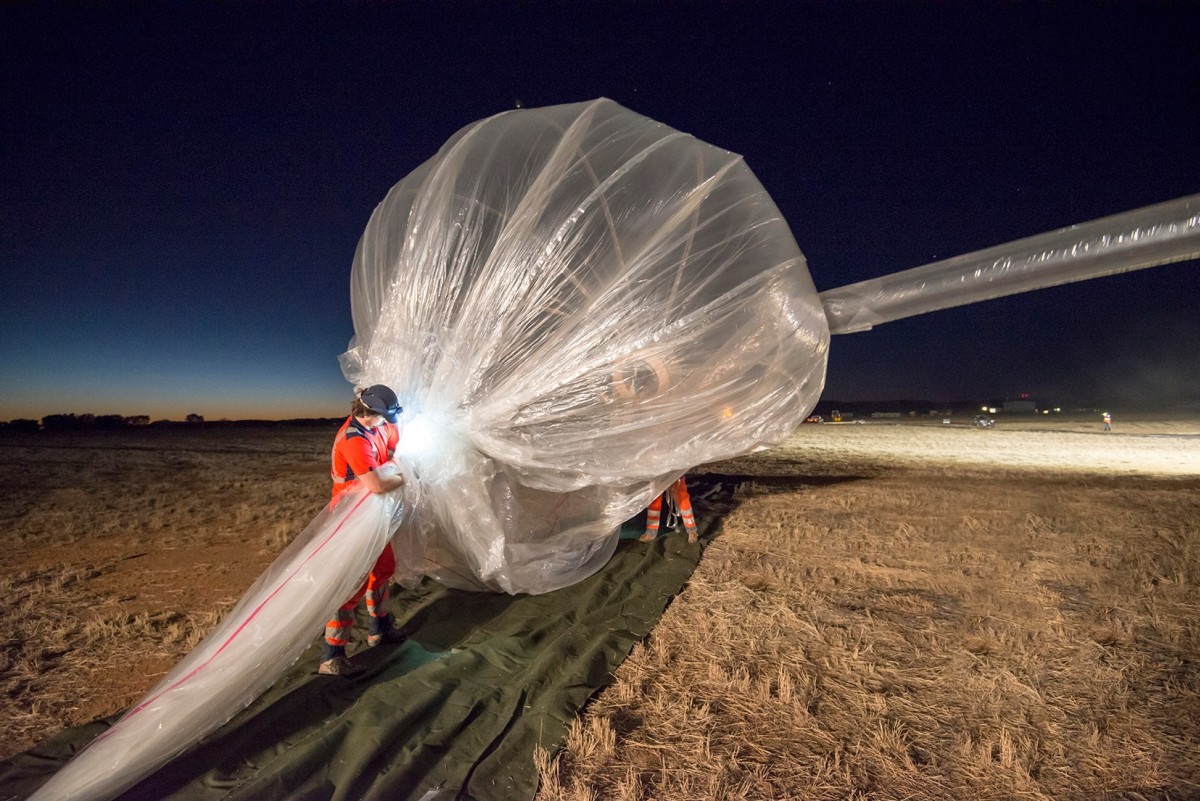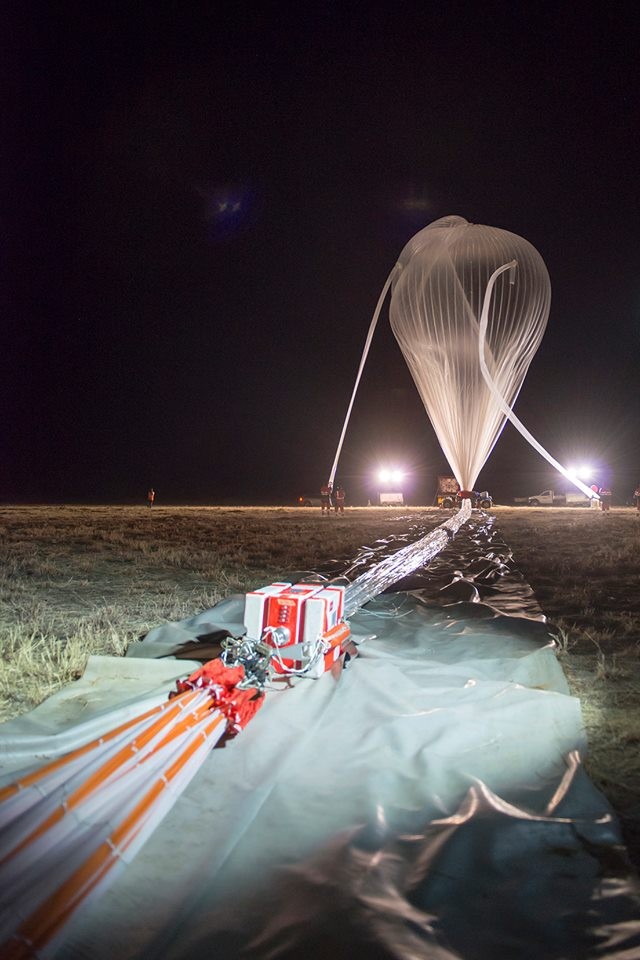-
Updated on April 7 2017
Climate, first flight of CNES australian campaign
Alice Springs, Australia.- The first mission of the Austral 2017 campaign was performed from the facilities of the Australian Balloon Launch Station, located in the Seven Mile sector of the Alice Springs airport, in Central Australia. The balloon was launched by a team of the french space agency CNES on the night of April 4.
The balloon used was a Zodiac model 150Z measuring 150.000 m3 and the objective of the flight was to transport a multipayload gondola called CLIMATE, acronym for Combined Laser and In situ Measurements in the ATmospherE.
Under these lines we can see an image of the CLIMATE gondola hold by an auxiliary balloon, a few minutes before the launch. The picture -as well the rest of the images of this entry- was taken by Sébastien Chastanet (OMP / IRAP / UT3 / CNES / CNRS) and published by the Observatoire Midi-Pyrénées in his Facebook Page.

The balloon was launched using the auxiliary balloon method which CNES has been developing almost from the inception of his balloon program (in fact is the only agency which currently uses it). After released, the balloon ascended during 1 hour and 45 minutes until reaching the planned altitude of 33 km, and once there maintained a stabilized float flight for 40 minutes. Then, following the preliminary plan for the flight, were activated the gas venting valves located at the top of the balloon, which started a controlled descent during 2 hours and 30 minutes to reach 17 km, when the mission was terminated.
After a total flight time of 4 hours and 55 minutes, the payload descended safely near Glen Helen, Northern Territory, 130 kilometers west of Alice Springs.
As I've mentioned above, the gondola carried a combination of 10 scientific experiments developed in different European laboratories but with the same objective: to study concentrations of the main greenhouse species (H2O, CO2 and CH4) and characterize the stratospheric aerosols. The vast majority of measurements and samplings are taken during the controlled descent to avoid contamination of the samples by the balloon itself.
The gondola can be seen in detail in the image below, while being prepared for the flight.

The gondola structure follow the standard conformation of steel bars and balls which CNES engineers mastered over the years, maximizing the space, functionality and versatility which can be adapted to the science needs in each flight. The total mass including instruments is about 240 kgs.
The payloads located onboard CLIMATE include several modules of the following instruments:
- AMULSE (Atmospheric Measurements by Ultra-Light Spectrometer) for CO2 and CH4 developed by the Groupe de Spectrométrie Moléculaire et Atmosphérique of the Université de Reims. It consist of a compact lightweight spectrometer based on near infrared laser technology at 2.04 µm coupled to a 6-m open-path multipass cell which allows to perform measurements using the Wavelength Modulation Spectroscopy technique. The spectrometer can make in situ measurements of the vertical profiles of the CO2 at high precision levels and with high temporal/spatial resolution.
- Pico-SDLA (Spectrométres á Diode Laser Accordables) also to measure CO2, CH4 and water vapour developed by the Division Technique of INSU. The measurement principle of Pico-SDLA is the propagation of a laser wave whose wavelength is centered on an absorption line of the molecule to be detected. The optical path is open to the atmosphere. The measurement of the absorption on the detected optical wave is then inverted to obtain a concentration of the gas.
- AirCore samplers composed by a long tube which while descending from high altitude has one end open and the other closed being able to sample and retain a mole fraction profile of a gas to be analyzed after the flight. The samplers were developed by the Atmospheric Radiation Analysis group at the Laboratoire de Météorologie Dynamique
The balloon launched with CLIMATE onboard not only was the first flight of the Austral 2017 campaign, but also was the first balloon launched by CNES in Australia since 1988 when the french space agency launched two stratospheric balloons from the Charleville airport in Queensland.

Stay tuned to more news on the campaign. There are two more missions to come: CARMEN which will transport a large table of solar cells for calibration from the European Space Agency and several experiments provided by Universities through the Canadian Space Agency, and the "star" of the campaign, the PILOT telescope which will measure the emission of dust grains in the interstellar medium from the southern hemisphere.
Note: Thanks to Stephane Louvel, head of the CNES operational team now in Australia, by the detailed information on the flight.
-
Share this on social media









